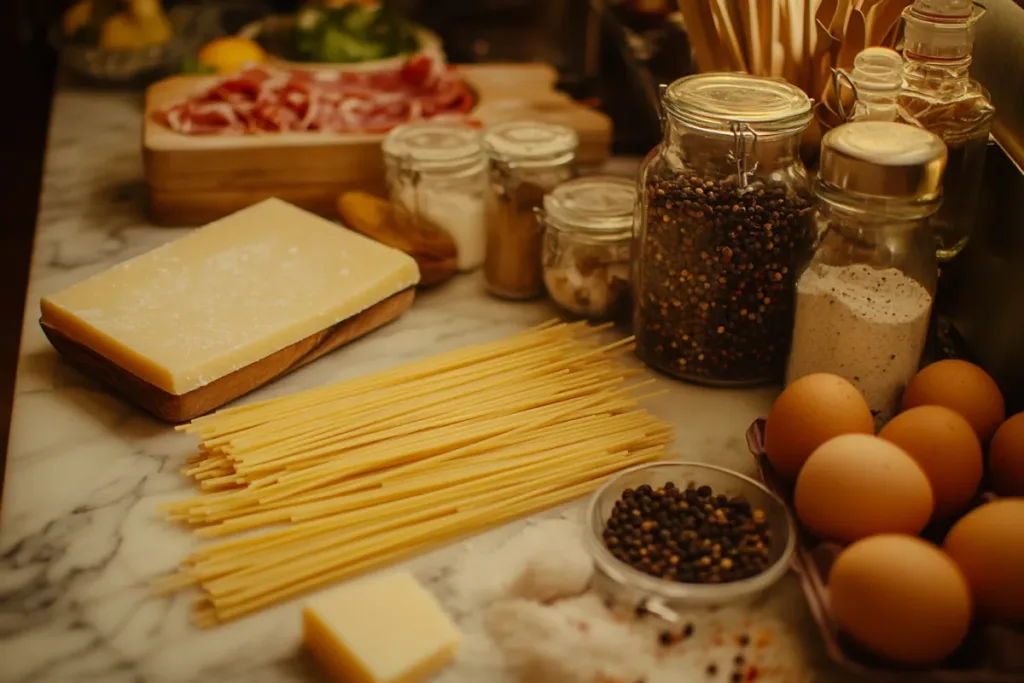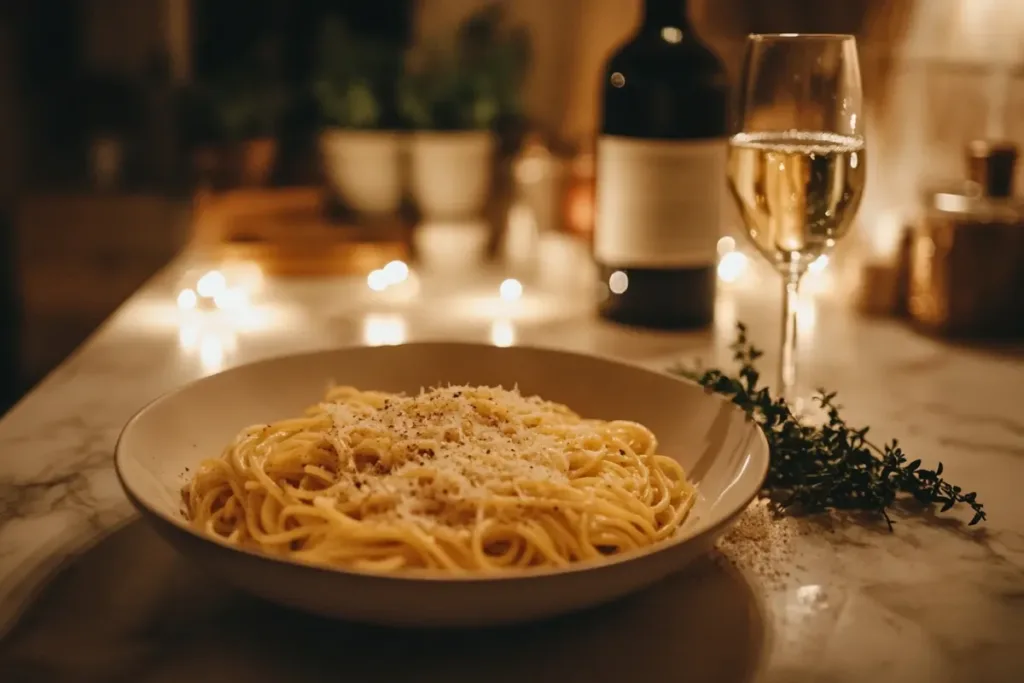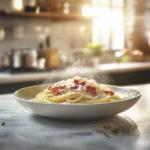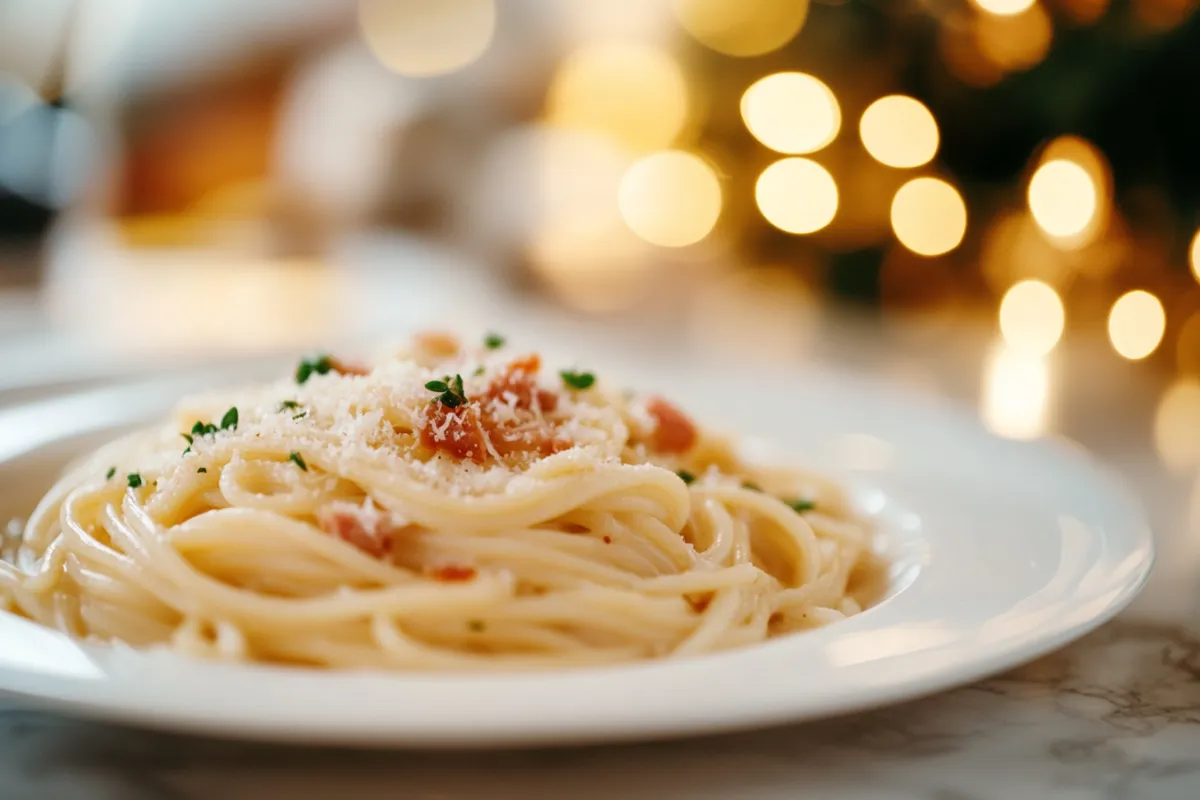Introduction
Spaghetti Carbonara is a beloved Italian classic that has captivated the taste buds of food lovers all over the world. Its creamy texture, rich flavors, and simplicity make it an all-time favorite. The dish may seem simple, but getting the perfect balance of flavors and consistency requires precision. This guide will help you understand the secrets of making perfect Spaghetti Carbonara, bringing authentic Roman flavors to your kitchen.
Carbonara has a fascinating story behind it, which involves its Roman roots and a few different origin theories. This delicious pasta dish originated in Rome and quickly gained global popularity. It only requires a few ingredients, yet these must be of high quality for the best results. In this article, we will dive deep into the history, the authentic ingredients, and the step-by-step cooking process to create a true Spaghetti Carbonara.
The History and Origins of Carbonara
The origin of Spaghetti Carbonara is both fascinating and mysterious, with several theories circulating about how it came into existence. One theory suggests that the dish was created by coal miners, or carbonari, who needed a quick and nutritious meal during work. The simplicity and readily available ingredients made Carbonara an ideal option for them.
Another theory points to the influence of American soldiers stationed in Italy during World War II. As the story goes, American troops brought with them their rations of bacon and eggs, which the Italians combined with pasta to create what we now know as Spaghetti Carbonara. It is also believed that Carbonara was initially served in Roman taverns and gradually became a staple in Italian households.
Despite its uncertain origins, one thing is certain—Spaghetti Carbonara has become an integral part of Italian cuisine, celebrated for its authenticity, simplicity, and bold flavors.
Traditional Ingredients

The magic of authentic Spaghetti Carbonara lies in its simple yet high-quality ingredients. There are just five main components that bring this dish to life, each playing an important role in creating its iconic flavor.
- Guanciale: Traditionally, Carbonara is made using guanciale, a cured meat made from pork jowl or cheeks. Guanciale is known for its robust flavor and fatty texture, which contributes to the richness of the dish. It can be substituted with pancetta if guanciale is unavailable, but the result will be slightly different in taste.
- Pecorino Romano Cheese: Another key component is Pecorino Romano, an aged Italian cheese made from sheep’s milk. It has a salty, tangy flavor that pairs perfectly with the guanciale and adds depth to the dish. Some recipes may suggest using Parmesan, but for the authentic experience, Pecorino Romano is recommended.
- Eggs: The sauce for Spaghetti Carbonara is created using raw eggs, which gives the dish its creamy consistency without the addition of cream. The eggs cook slightly when mixed with the hot pasta, creating a luscious coating on the spaghetti.
- Black Pepper: Freshly ground black pepper is an important seasoning that balances the richness of the dish and gives it a subtle heat.
- Spaghetti: Spaghetti is the traditional pasta used for Carbonara. The sauce clings perfectly to the strands of spaghetti, allowing for an even distribution of flavor.
Authentic Recipe Breakdown
Ingredients
- 350g Spaghetti
- 200g Guanciale (or pancetta as a substitute)
- 4 Large Eggs (3 whole eggs + 1 yolk)
- 100g Pecorino Romano Cheese, finely grated
- Freshly ground black pepper
Step-by-Step Cooking Instructions
Step 1: Preparing the Guanciale
To start, cut the guanciale into small pieces. Heat a large skillet over medium heat and add the guanciale. Let it cook in its own fat until it becomes crispy and golden brown, which should take around 5-7 minutes. Remove the skillet from the heat but keep the rendered fat in the pan.
Step 2: Cooking the Pasta
While the guanciale is cooking, bring a large pot of salted water to a boil. Add the spaghetti and cook until it is al dente (firm to the bite). It is essential that the pasta is not overcooked, as it will continue to cook once combined with the hot sauce.
Before draining, reserve a cup of the pasta cooking water. This starchy water will be used to adjust the consistency of the sauce.
Step 3: Preparing the Egg Mixture
In a large bowl, whisk together the eggs, extra egg yolk, and grated Pecorino Romano cheese. Add a generous amount of freshly ground black pepper. The egg mixture should be smooth and creamy.
Step 4: Combining the Ingredients
Add the cooked spaghetti to the skillet with the guanciale over low heat, ensuring the pasta is evenly coated in the rendered fat. Remove the skillet from heat and quickly add the egg and cheese mixture, stirring vigorously. To prevent the eggs from scrambling, be sure to combine everything off the direct heat.
Add a splash of the reserved pasta water to achieve a silky, smooth consistency. The starch in the pasta water helps bind the sauce and create a glossy finish. Continue tossing until the sauce evenly coats every strand of pasta.
Step 5: Serving
Transfer the Spaghetti Carbonara to a serving plate, and finish with an extra sprinkle of Pecorino Romano and freshly ground black pepper. Serve immediately while the dish is hot and creamy.
Tips for Cooking the Perfect Spaghetti Carbonara
- Use Quality Ingredients: The key to a good Carbonara is using high-quality ingredients. Guanciale and Pecorino Romano are must-haves for an authentic taste.
- Timing is Crucial: Carbonara comes together very quickly, so it is important to have all ingredients prepped and ready before starting. This ensures a smooth cooking process.
- Tempering the Eggs: To avoid curdling, it is important to temper the eggs by adding a small amount of the hot pasta water while whisking. This gradually raises the temperature of the eggs, reducing the chance of scrambling.
- Cook Off Heat: When combining the egg mixture with the pasta, always remove the skillet from direct heat. The residual heat from the pasta and skillet will be enough to cook the eggs and achieve the desired creamy consistency.
Variations of Carbonara
While authentic Spaghetti Carbonara does not include cream, there are several variations that have evolved over time. Below are a few popular modifications:
- Creamy Carbonara: Some cooks add a splash of cream to the egg mixture to make the sauce extra rich. This version, while tasty, is not part of the traditional recipe.
- Vegetarian Carbonara: For a vegetarian twist, substitute the guanciale with smoked mushrooms or caramelized onions. The smoky flavor can mimic the depth that guanciale provides.
- Seafood Carbonara: Variations like smoked salmon Carbonara add a unique twist to the dish. The smokiness of the salmon complements the creamy sauce beautifully.
Each variation offers a new flavor profile, but the essence of Carbonara remains—a simple, delicious dish that allows the quality of the ingredients to shine.
Step-by-Step Guide to Cooking Spaghetti Carbonara
Step 1: Preparing Ingredients (Mise en Place)
Begin by organizing all your ingredients and kitchen tools. Carbonara comes together quickly, and it is essential to have everything on hand to ensure smooth preparation. Gather the guanciale, eggs, Pecorino Romano, and spaghetti.
Step 2: Cooking the Guanciale
Cut the guanciale into thick pieces to ensure you get a nice, crispy bite. Cook it over medium heat, allowing it to render its fat and turn golden brown. The fat from the guanciale will provide the rich flavor base for the pasta.
Step 3: Cooking the Pasta
Cook the spaghetti in a pot of well-salted water until it is al dente. Reserve some of the pasta water before draining. This step is critical for adjusting the consistency of the final dish.
Step 4: Creating the Sauce
Combine the eggs and grated Pecorino Romano in a bowl. Whisk well to create a smooth, creamy mixture. Remember to add plenty of freshly ground black pepper for that authentic Roman touch.
Step 5: Combining Everything
Add the hot, drained pasta to the skillet with guanciale and toss to coat it in the rendered fat. Remove from heat, add the egg mixture, and mix vigorously, adding a little pasta water as needed to achieve the desired consistency.
Step 6: Serving the Dish

Plate the Spaghetti Carbonara and garnish with additional Pecorino Romano and freshly ground black pepper. Serve immediately to enjoy the dish at its peak creaminess.
Serving Suggestions
Spaghetti Carbonara is best enjoyed immediately after cooking, while the sauce is still hot and creamy. Here are some suggestions to enhance your dining experience:
- Serve with Warm Bowls: Carbonara cools quickly, causing the sauce to thicken. To prevent this, serve it in warm bowls to maintain its creamy texture for longer.
- Pairing with Wine: Carbonara pairs wonderfully with white wines like Pinot Grigio or Chardonnay, as they balance the richness of the dish.
For more amazing pasta recipes, be sure to explore our homepage at Cheery Recipes.
FAQs About Spaghetti Carbonara
Why is there no cream in traditional Spaghetti Carbonara?
Authentic Carbonara relies on the creaminess created by eggs and Pecorino Romano cheese. The use of cream is considered a deviation from the original recipe, which emphasizes the simple blend of eggs and cheese to create a rich sauce.
What is the difference between Pancetta, Guanciale, and Bacon in Carbonara?
Guanciale is the traditional choice for Carbonara and is made from pork jowl, resulting in a rich and fatty flavor. Pancetta, made from pork belly, is a suitable substitute but lacks the depth of guanciale. Bacon, which is often smoked, can also be used but adds a different flavor profile.
How do I prevent the eggs from scrambling when making Carbonara?
To prevent scrambling, mix the egg and cheese mixture off direct heat and ensure the pasta is not too hot. Adding a bit of reserved pasta water while stirring helps to temper the eggs.
Can I use a different type of pasta for Carbonara?
While spaghetti is the traditional choice, you can use other pasta types such as bucatini, fettuccine, or rigatoni. Just make sure the pasta is cooked to al dente so it holds the sauce well.
How can I make Spaghetti Carbonara vegetarian-friendly?
To make a vegetarian version, replace the guanciale with smoked mushrooms or a combination of caramelized onions and smoked paprika. This adds a smoky depth without using meat.
Conclusion
Spaghetti Carbonara is a classic dish that embodies the essence of Italian cuisine—simple, high-quality ingredients brought together with skill and care. Whether you stick with the authentic recipe or experiment with variations, the result will be a comforting, satisfying meal that showcases the timeless charm of Italian cooking.
For more delicious recipes and cooking inspiration, head to our homepage and explore the wonderful world of Italian cuisine!
Print
Spaghetti Carbonara: The Authentic Italian Classic
- Total Time: 30 minutes
Description
A classic Italian pasta dish that brings together rich and creamy flavors with crispy guanciale, all enveloped in silky strands of spaghetti.
Ingredients
- 350g Spaghetti
- 200g Guanciale (or pancetta as a substitute)
- 4 Large Eggs (3 whole eggs + 1 yolk)
- 100g Pecorino Romano Cheese, finely grated
- Freshly ground black pepper
Instructions
- Prepare the Guanciale: Cut the guanciale into small pieces. Heat a large skillet over medium heat and add the guanciale. Let it cook in its own fat until it becomes crispy and golden brown, about 5-7 minutes. Remove the skillet from the heat but keep the rendered fat in the pan.
- Cook the Pasta: While the guanciale is cooking, bring a large pot of salted water to a boil. Add the spaghetti and cook until al dente (firm to the bite). Before draining, reserve a cup of the pasta cooking water to adjust the consistency of the sauce later.
- Prepare the Egg Mixture: In a large bowl, whisk together the eggs, extra egg yolk, and grated Pecorino Romano cheese. Add a generous amount of freshly ground black pepper. The mixture should be smooth and creamy.
- Combine the Ingredients: Add the cooked spaghetti to the skillet with the guanciale over low heat, ensuring the pasta is evenly coated in the rendered fat. Remove the skillet from heat and quickly add the egg and cheese mixture, stirring vigorously. To prevent the eggs from scrambling, be sure to combine everything off the direct heat. Add a splash of the reserved pasta water to achieve a silky, smooth consistency. Continue tossing until the sauce evenly coats every strand of pasta.
- Serve: Transfer the Spaghetti Carbonara to a serving plate, and finish with an extra sprinkle of Pecorino Romano and freshly ground black pepper. Serve immediately while the dish is hot and creamy.
- Prep Time: 10 minutes
- Cook Time: 20 minutes
- Category: Dinner
- Cuisine: Italian
Nutrition
- Serving Size: 4
- Calories: 650 per serving

